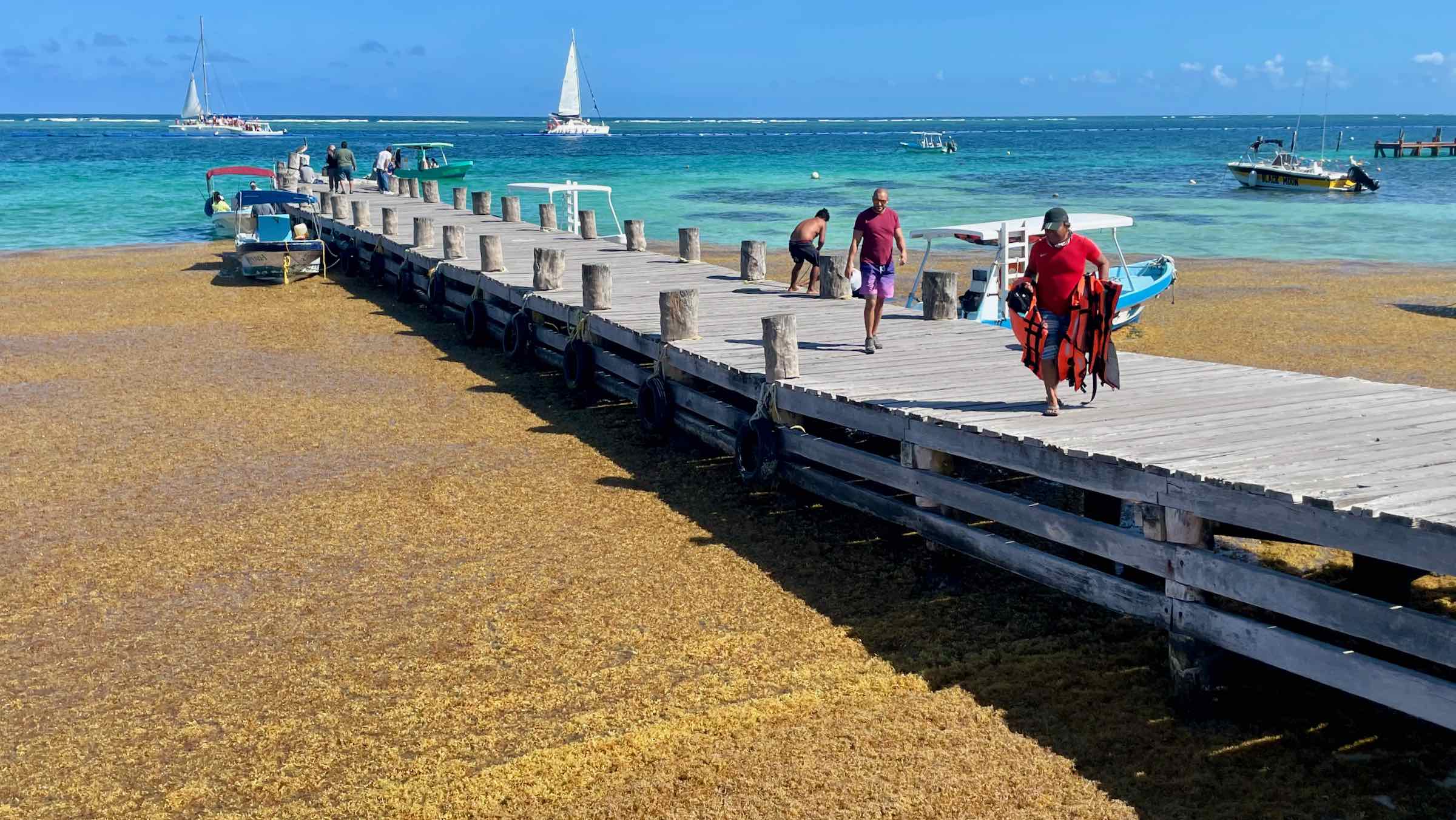If you’ve spent any time in the Riviera Maya, you’ve probably experienced the Red Sargassum seaweed that can pile up on the beaches, especially during the hottest parts of the year. It’s unsightly, a nuisance when swimming, and also stinks pretty bad when it piles up.
Sargassum is algae. It’s a natural phenomenon and originates in the Sargasso Sea, a region in the Atlantic Ocean. It provides habitat and feeding grounds for a wide variety of marine life. However, pollution appears to be making this phenomenon much more pronounced as time goes on. The effects can be seen on coastlines in the Caribbean, the Gulf of Mexico, Brazil, and the east coast of Florida.
The threat to tourism is enormous. Towns and resorts along the coast go to great lengths to clean the beaches for visitors. They’ll use manual labor, tractors, beach cleaning equipment, and even barriers that float offshore to try and mitigate it. There’s only so much they can do though.


Sargassum in Riviera Maya
My last experience with sargassum was in Playa del Carmen, where I stayed for 6 weeks in April and May. I thought I was coming early enough in the year that it wouldn’t be too bad, but it was a significant issue the whole time I was there. It would vary day to day, but there were only a few days when it wasn’t pretty noticeable. Towards the end of my stay, the weather became more unsettled, and the wind and waves pushed tons of it up onto the beach.
I was in North Beach after Playa and saw sargassum there as well, although not nearly to the extent as in Mexico.




How to Avoid Sargassum
The best way to avoid sargassum is to visit at times of the year when it is less prevalent, such as winter. If that’s not an option, you might want to consider less susceptible places to stay. You can see current sargassum conditions in Quintana Roo at this monitoring page on Facebook. To see historical conditions, scroll down through the images to get to the older images.
What Can Be Done in the Long Run
Researchers are trying to discover the sources of the large blooms that are being seen with increasing frequency. The problem in large part appears to be the runoff of fertilizer and other nutrients from agriculture and industry that make it into large rivers and eventually into the ocean. To try and address problems like this will require cooperation within and among nations.
There is also ongoing work to find better ways to manage the blooms that occur. Sargassum can be harvested for profit, and perhaps there are better ways to do so further out at sea before it reaches shore.
For more reading, see the following article.
